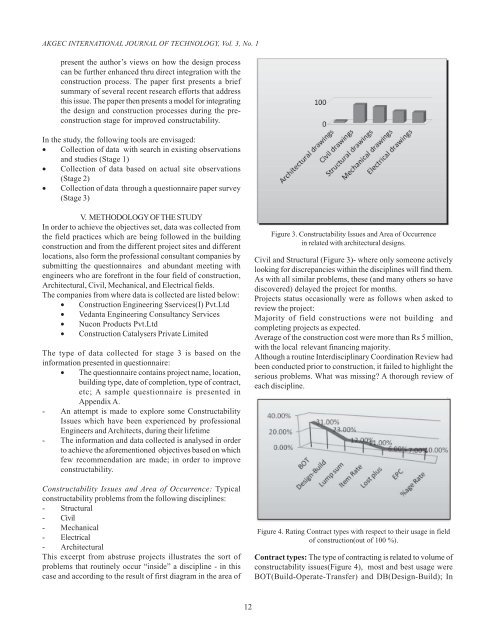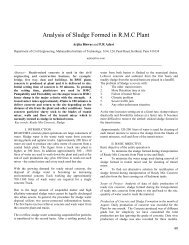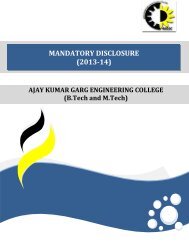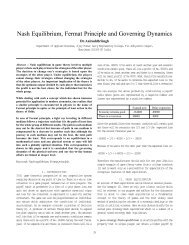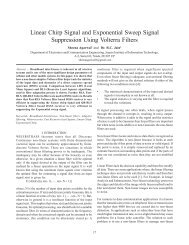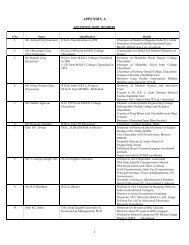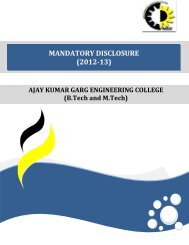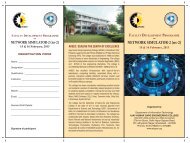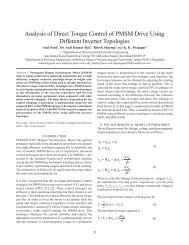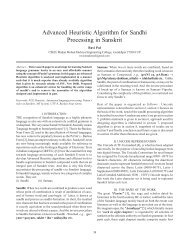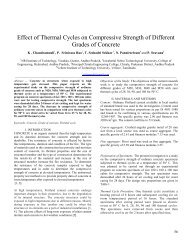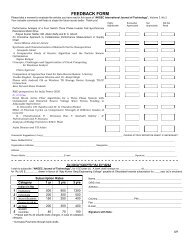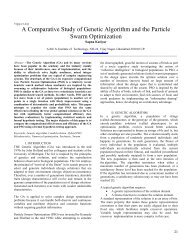Architectural designs and Constructability Issues
Architectural designs and Constructability Issues
Architectural designs and Constructability Issues
You also want an ePaper? Increase the reach of your titles
YUMPU automatically turns print PDFs into web optimized ePapers that Google loves.
AKGEC INTERNATIONAL JOURNAL OF TECHNOLOGY, Vol. 3, No. 1<br />
present the author’s views on how the design process<br />
can be further enhanced thru direct integration with the<br />
construction process. The paper first presents a brief<br />
summary of several recent research efforts that address<br />
this issue. The paper then presents a model for integrating<br />
the design <strong>and</strong> construction processes during the preconstruction<br />
stage for improved constructability.<br />
In the study, the following tools are envisaged:<br />
• Collection of data with search in existing observations<br />
<strong>and</strong> studies (Stage 1)<br />
• Collection of data based on actual site observations<br />
(Stage 2)<br />
• Collection of data through a questionnaire paper survey<br />
(Stage 3)<br />
V. METHODOLOGY OF THE STUDY<br />
In order to achieve the objectives set, data was collected from<br />
the field practices which are being followed in the building<br />
construction <strong>and</strong> from the different project sites <strong>and</strong> different<br />
locations, also form the professional consultant companies by<br />
submitting the questionnaires <strong>and</strong> abundant meeting with<br />
engineers who are forefront in the four field of construction,<br />
<strong>Architectural</strong>, Civil, Mechanical, <strong>and</strong> Electrical fields.<br />
The companies from where data is collected are listed below:<br />
• Construction Engineering Sservices(I) Pvt.Ltd<br />
• Vedanta Engineering Consultancy Services<br />
• Nucon Products Pvt.Ltd<br />
• Construction Catalysers Private Limited<br />
The type of data collected for stage 3 is based on the<br />
information presented in questionnaire:<br />
• The questionnaire contains project name, location,<br />
building type, date of completion, type of contract,<br />
etc; A sample questionnaire is presented in<br />
Appendix A.<br />
- An attempt is made to explore some <strong>Constructability</strong><br />
<strong>Issues</strong> which have been experienced by professional<br />
Engineers <strong>and</strong> Architects, during their lifetime<br />
- The information <strong>and</strong> data collected is analysed in order<br />
to achieve the aforementioned objectives based on which<br />
few recommendation are made; in order to improve<br />
constructability.<br />
<strong>Constructability</strong> <strong>Issues</strong> <strong>and</strong> Area of Occurrence: Typical<br />
constructability problems from the following disciplines:<br />
- Structural<br />
- Civil<br />
- Mechanical<br />
- Electrical<br />
- <strong>Architectural</strong><br />
This excerpt from abstruse projects illustrates the sort of<br />
problems that routinely occur “inside” a discipline - in this<br />
case <strong>and</strong> according to the result of first diagram in the area of<br />
Figure 3. <strong>Constructability</strong> <strong>Issues</strong> <strong>and</strong> Area of Occurrence<br />
in related with architectural <strong>designs</strong>.<br />
Civil <strong>and</strong> Structural (Figure 3)- where only someone actively<br />
looking for discrepancies within the disciplines will find them.<br />
As with all similar problems, these (<strong>and</strong> many others so have<br />
discovered) delayed the project for months.<br />
Projects status occasionally were as follows when asked to<br />
review the project:<br />
Majority of field constructions were not building <strong>and</strong><br />
completing projects as expected.<br />
Average of the construction cost were more than Rs 5 million,<br />
with the local relevant financing majority.<br />
Although a routine Interdisciplinary Coordination Review had<br />
been conducted prior to construction, it failed to highlight the<br />
serious problems. What was missing A thorough review of<br />
each discipline.<br />
Figure 4. Rating Contract types with respect to their usage in field<br />
of construction(out of 100 %).<br />
Contract types: The type of contracting is related to volume of<br />
constructability issues(Figure 4), most <strong>and</strong> best usage were<br />
BOT(Build-Operate-Transfer) <strong>and</strong> DB(Design-Build); In<br />
12


